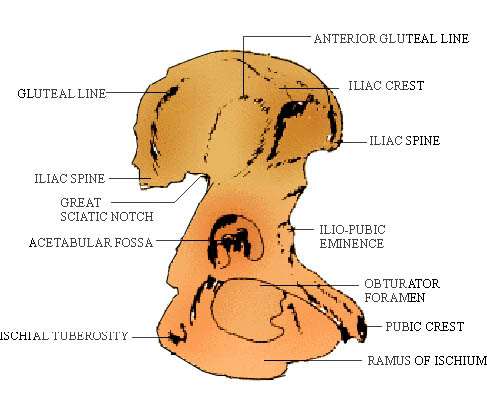|
(b) Radius-Ulna
(Figure 20.17). (1) These are the bones of the lower arm. The radius
is on the thumb side, and the ulna is on the side of the little finger.
(2) The radius is shorter than the ulna and consists of a head,
shaft and lower end, with a tuberosity below the neck, a nutrient foramen
in the shaft and a styloid process at the lower end. (3) The ulna
is longer than the radius and possesses an olecranon and coronoid
processes, with trochlear and radial notches at the upper end. (4)
The shaft of the ulna is long, with a nutrient foramen, supinator
fossa and a crest-like interosseous border. (5) The lower end
of the ulna is slightly expanded and consists of head and styloid process.
(c) Carpal Bones. (1) These
are eight bones of the wrist, arranged into two rows of four bones
each and held together by a series of ligaments. (2) Proximal
row- (a) Scaphoid (b) Lunate (c) Triquetral (d) Pisiformes.
(3) Distal row - (a) Trapezium, (b) Trapezoid (c) Capitate
(d) Hamate.
(d) Metacarpals and Phalanges. The
hand consist of five bones of the palm called metacarpals and 14
phalanges - two for the thumb and three each for the four fingers.
 Click here to enlarge
Click here to enlarge
igure 20.18 Pelvic Girdle of a human
| 